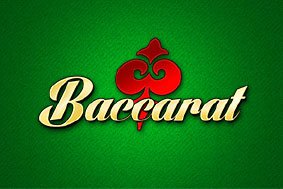How Is the Game Played?
While it’s true that the value of the cards is laid out as mentioned above, the actual value of the cards are worked out according to the rightmost digit of the sum. So, if you’re dealt an eight and a seven, which together totals 15, the value of both will be five, as this is the rightmost number in 15. This being the case, the highest possible hand value in any game of baccarat is nine.
Taking a seat at a baccarat table will provide you with three separate boxes for placing your wagers in. These will state, ‘Tie’, ‘Banker’ and ‘Player’, and you’re basically gambling upon which one of these will end up being the owner of the higher valued cards. You can, of course, place bets on more than one of these if you so choose. Once you’ve placed any bets, the dealer will deal two cards to both yourself, the player, and two cards to themselves as well. If neither the play nor the dealer is dealt a total of eight or nine in the first two cards a tableau of drawing rules is consulted, first for the player.
If the player has an initial total of between zero and five, he or she is dealt a third card. If the initial total is of six or seven, he or she stands. In terms of the banker, if the player has stood, he regards only his own hand and acts according to the same rules as the player. If the player has been dealt a third card, the dealer has to act according to a few more complex rules. This all depends upon the value of the cards currently in the player’s hand, and this affects the outcome of the third card drawn by the dealer. It can get a little confusing here, but fortunately for you, the live casino version of the game is only something that the banker needs to be fully informed on, and they will act according to this tableau.
As mentioned, there are three possible outcomes of a hand of baccarat. Either the player wins. The dealer wins. Or there’s a tie. If you’ve gambled on the incorrect outcome, you’ll lose all of your wager. However, if you’ve placed a wager on a correct outcome, you’ll be paid out accordingly. If you’ve placed a bet on a tie being the outcome of the game, you’ll receive a pay out of nine for one. If, on the other hand, your winning gamble was on the banker or player having the winning hand, you’ll be rewarded usually with a pay out of two for one.













